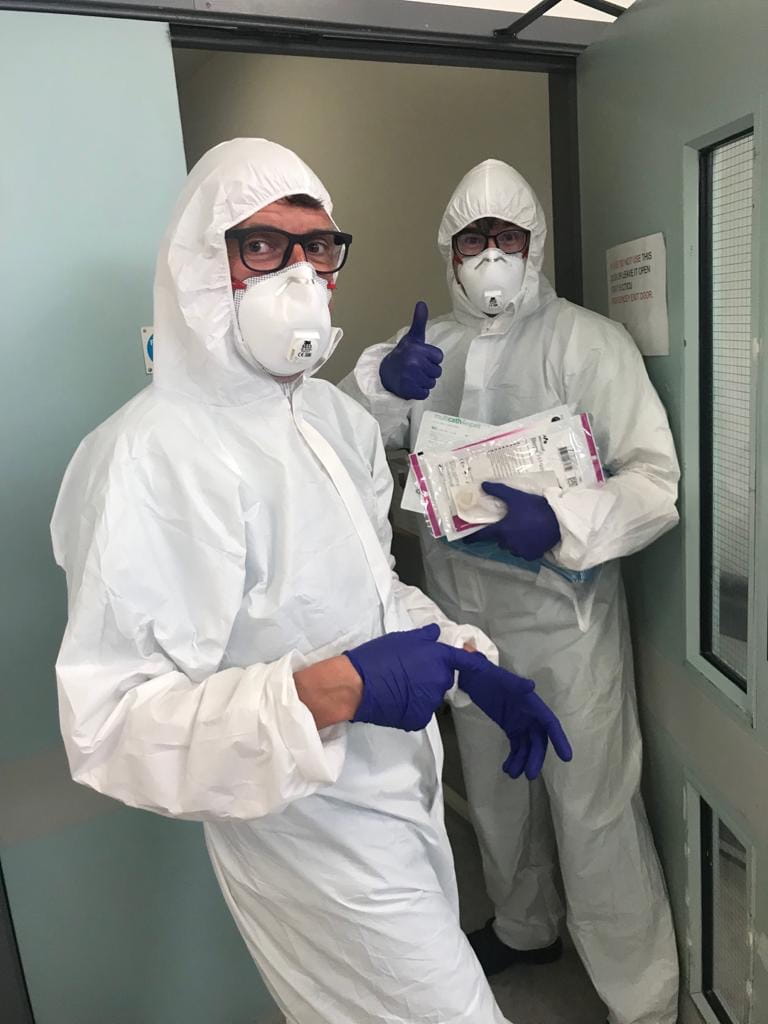The changing workforce landscape

07 May 2020
Professor Ian Loftus
Professor Ian Loftus is a Consultant Vascular Surgeon at St George’s University Hospitals NHS Foundation Trust. He is also the immediate Past-President of the Vascular Society of Great Britain and Ireland and an incoming Council member of RCS England (July 2020). In this blog series, Ian describes how workforce patterns had to be reassessed as his trust saw a rapid spike in COVID-19 related admissions.
The COVID-19 pandemic has had a profound impact on the provision of health services, including all of the surgical specialties. London has been badly affected in terms of the numbers of COVID-19 related admissions, and the impact on elective and urgent surgery. We have had to change the way we work and take on extended, flexible roles to support the rapidly evolving situation.
At St George’s Hospital in South West London, when the dramatic rise in admissions began in early March, we made a decision to stop all elective vascular surgery before national guidance was issued. Within days, our trust saw a surge of around 1,000 COVID-19 related admissions, with well over 100 ventilated patients spread across a rapidly expanded intensive treatment unit (ITU) facility.
Most of the non-consultant grade staff were volunteered to provide medical care to COVID-19 patients. The consultant workforce doubled up on call to provide resident consultant-led vascular emergency cover.
We also saw an opportunity to help our intensive care staff by, along with our interventional radiology colleagues, providing a ‘lines service’ for ventilated patients. This involves the placement of catheters for close monitoring and support of vital organs, especially the kidneys. We set up a dedicated vascular 'lines service' mobile phone and a joint surgical/interventional radiology rota, providing arterial and central venous access, plus access for dialysis and systemic cooling for hyperpyrexia. I am aware that vascular teams in other London units have been providing similar support. By supplying this service, we have enabled dedicated intensive care doctors to concentrate on other aspects of patient care, sharing the burden of work.
This has been very challenging both physically and mentally, as anyone who has been working in intensive care COVID-19 environments will be aware. But it has also been a great example of teamwork and camaraderie. Traditional models of working have been revised, boundaries to direct patient care broken down, and an invaluable clinical service provided with minimal planning or extra resource.
We have kept a prospective database of all lines inserted and will be following the course of patients throughout their stay, to ensure a complete governance trail and audit loop is accomplished. This will be especially useful if and when a second surge occurs, and the service needs to be re-established or even expanded from its existing format.
Thankfully, over the last few days, we have started to see a significant decline in new admissions and patients requiring ventilatory support. We are hopeful that we will be able to restart some urgent vascular and endovascular intervention over the next two weeks, and will probably be able to revert to a more normal working practice for a period. However, the provision of the 'lines service' will be reviewed on a weekly basis with a view to stepping up the model again, if and when a second surge of cases occurs.
There has been a steep learning curve for some, especially older members of the consultant workforce who have not been involved in vascular access for some time. For those, working in pairs of consultants has been very helpful, providing support and assistance to those with less recent hands-on experience. Consultant surgeons and interventional radiologists have supported each other closely, stepped out of their comfort zones, and worked collaboratively and flexibly in adverse conditions. Many other surgeons have had to reassess their practice and change the nature of the work they do to reflect the current crisis, and the landscape may change further over the coming months. But this is one example to prove that flexibility and collaboration can overcome some of the challenges posed, and provide direct patient benefit. A number have contracted (and thankfully recovered from) COVID-19, while others continue to put themselves into high risk environments daily, aware of the personal risks. And they will do it again over the course of this dreadful disease.
'A great example of teamwork and camaraderie.'

This blog is from our series COVID-19: views from the NHS frontline. If you would like to write a blog for us, please contact content@rcseng.ac.uk.
